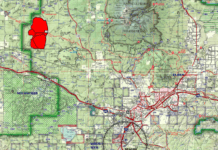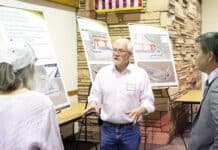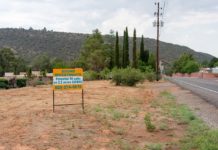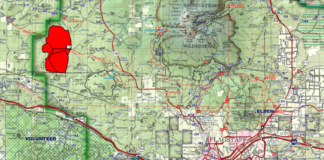The city of Sedona is in turmoil after city council approved streetlights for Highway 89A, Sedona resident Paul Chevalier told the Planning and Zoning Commission.
“If you approve this tonight, it will be worse,” he said.
On Tuesday, Aug. 19, P&Z voted 5-1 to deny a recommendation of a city-initiated request for an amendment to the Sedona Community Plan to increase density from 12 units per acre to 20 in some zones.
By Alison Ecklund
Larson Newspapers
The city of Sedona is in turmoil after city council approved streetlights for Highway 89A, Sedona resident Paul Chevalier told the Planning and Zoning Commission.
“If you approve this tonight, it will be worse,” he said.
On Tuesday, Aug. 19, P&Z voted 5-1 to deny a recommendation of a city-initiated request for an amendment to the Sedona Community Plan to increase density from 12 units per acre to 20 in some zones.
Chairman John Griffin was the lone “no” vote. Commissioner Alex Gillon was excused.
City staff and members of the Housing Commission sought the proposed amendment as a way to bring affordable housing to Sedona.
According to the density incentive, for all units more than 12, one affordable unit would be required for every two market-rate units.
If a developer took advantage of the incentive and built all 20 units, of the eight extra units above 12, five could be market-rate and three would be affordable.
Since many residents were concerned with the impact higher density might bring to their neighborhoods, staff responded by lowering the initial cap of 537 units in five years to 250.
Using the two market-rate to one affordable unit ratio would yield 83 affordable units — 46 percent of the Housing Commission’s goal of 179 affordable units in five years.
Staff lowered the cap, knowing that only 39 of the 311 units approved in the past five years have been built.
Although the incentive would be there to increase density if a developer wanted to include affordable housing, it doesn’t guarantee anyone would.
“It’s a lot of work for just a few units,” Commissioner Hal Driggs said.
The public agreed and begged the commission not to recommend the proposal.
Carol Wirkus agreed with Driggs that the amendment was “an awful lot of work for limited results.”
Caroline Biederman, a prominent face in the fight against the proposal, saw the amendment as “blurred, murky and open-ended.”
The commission should consider that for every person who came in protest of the amendment, there were 50 to 80 more who didn’t come, she said.
Biederman was concerned that people who qualify for affordable housing wouldn’t want the 500 square-foot one bedroom unit or the 800 square-foot two bedroom units.
After talking to Sedona teachers and police officers who might qualify for affordable units, Wirkus said, most don’t want to live in Sedona.
“We had a long conversation with a police officer,” she said. “He said he and his fellow officers had no interest living in Sedona because this is not the type of community where he would want to raise his family, because it’s mostly retirement and tourists.”
After listening to the public’s concerns, Commissioner Marty Losoff was grateful for the changes staff made in response to public input, but he still struggled supporting it.
“For everybody that moves into an affordable unit, we might lose someone living in a single family residence, and there’d be an imbalance and that concerns me,” he said.
Commissioner Denise Barnhart found two major problems with the density incentive.
“I cannot for the life of me see how a developer could make money on this,” she said. “Then I couldn’t see why someone would want to buy the market-rate units, given the high density.”
Griffin reassured the public that Sedona isn’t the first city to face the affordable housing problem.
“It isn’t going to go away,” he said. “It’s important that we address it.”
He also addressed the public’s concern about increased density destroying Sedona’s small-town feel.
“To think of small town character and feeling without anyone living here seems more negative than a building being tall or something,” Griffin said.
Alison Ecklund can be reached at 282-7795, Ext. 125, or e-mail aecklund@larsonnewspapers.com





















